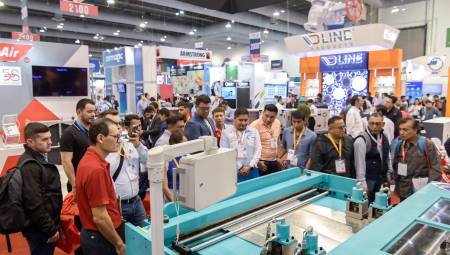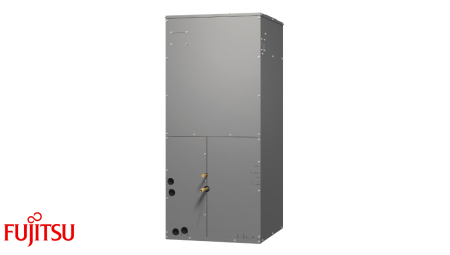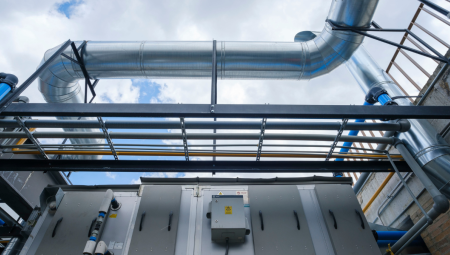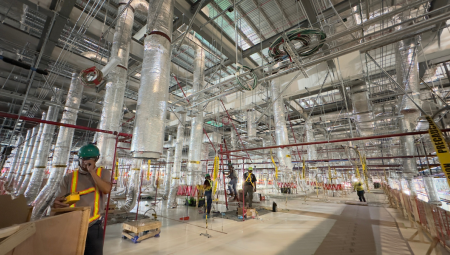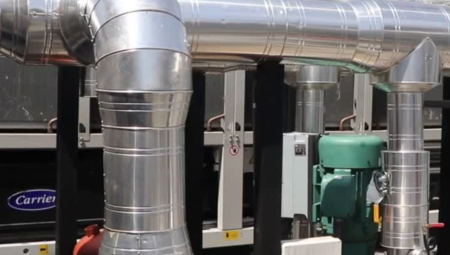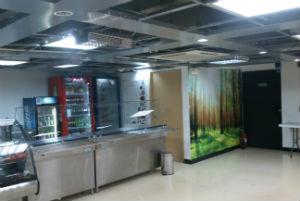 Keeping spaces clean of bad odors is a prerequisite in many sectors. Let's know the proposed solution to this kind of inconvenience.
Keeping spaces clean of bad odors is a prerequisite in many sectors. Let's know the proposed solution to this kind of inconvenience.
by Saúl Campuzano*
Humans breathe between five and six liters of air per minute. Due to the different sources of pollution in the modern world this means that we ingest, every minute, a large amount of pollutants of different kinds. Although in most cases these contaminants are imperceptible to ordinary people, this does not make them harmless. It is when pollution is accompanied by bad odors that we perceive that there is a problem.
Bad odors represent one of the most common and difficult problems to solve in any industry. Odors are a mixture of vapors, gases, and dust that can be caused by multiple factors, both internal and external. There can be many types of odors: low intensity, but durable; high-intensity, but short-lived; of temporary appearance, but frequent; and long-lasting in general.
Among the most common internal factors we can find odors related to water pipes in poor condition, air conditioning siphons, defective air conditioning filters, kitchens where they prepare and or serve food, garbage rooms, or simply the usual use of bathrooms. Among the external factors that produce bad odors (odoriferous pollution), we find those from the public sewer system, wastewater treatment plants, neighboring factories that emit odors, among other pollutants that come from the surrounding environment.
Odoriferous pollution in countries like Colombia is more common than is believed and is listed as a "city problem", mainly from wastewater. This is a problem that affects any type of company, because all its employees remain in their workplace for a whole working day, which can be affected by symptoms such as nausea, headaches, insomnia, loss of appetite and respiratory problems. These discomforts, therefore, result in the detriment of the quality of life of the worker and his family at the same time as a high absenteeism from work and economic losses for employers.
Odoriferous pollution not only affects employees, it also affects customers and visitors. Commercial and service companies are the most affected, since in most cases customers avoid staying in the place for a long time or simply prefer not to go because of annoying odors, bringing with them economic consequences and a bad image of the company.
How can we solve this problem?
Companies invest high amounts of money in the search for possible internal damages such as those mentioned above, incurring in civil works that disrupt the correct performance of daily work and in most cases without obtaining good results. Some, frustrated at the apparent impossibility of solving the problem, resort to methods to make up the bad smell by means of flavorings or similar methods. But are air flavourings a solution?
Due to the impossibility of finding the source of the problem, or simply resigned to the bad odors coming from the outside, companies find no alternative but the use of air fresheners and other types of flavorings, thus managing to "solve" the problem partially (seconds), to later aggravate it, because these fragrances represent a new polluting gas that enters to mix with the existing bad odors. In turn, with the use of flavorings a new substance is created that can become even more harmful, this without taking into account the high expenses incurred in the purchase of these products and the progressive deterioration in the health of employees.
As part of this ephemeral solution, many companies invest large sums of money looking for a fragrance that characterizes them, such as banks and other service companies with a high number of branches. However, this strategy can be counterproductive since the liking or disliking for some type of fragrance depends on each person and it is virtually impossible to manufacture a generalized taste aroma. Here various psychological factors associated with perception come into play. As there are people who like a certain fragrance, others hate it thanks to the connection they have with positive or negative events at some point in their lives. Studies have shown how even a minimal smell can evoke powerful memories due to the connection between some nerves in the nose with the amygdala and hippocampus, organs that are directly involved in emotion (taste or disgust) and memory.
We are called to work constantly to improve the quality of the air we breathe. For this we have advanced technology that allows us to generate healthy work environments, free of chemicals, pathogenic microorganisms and, of course, free of odors.
The German bipolar ionization technology Bioclimatic allows us to guarantee the best conditions of indoor air quality, being considered a clean technology. This technology eliminates a high percentage of bad odors, regardless of their origin. Likewise, it inactivates bacteria, molds and yeasts. The systems are installed in the air supply, just where the indoor air mixes with the outside, or with portable systems, thus guaranteeing the ionization of 100% of the air.
Similarly, this process enriches the work environment with more than 20,000 bipolar ions of oxygen per cubic centimeter of air, which allows us to breathe air as healthy as the one we can breathe in a natural forest that has 15,000 bipolar ions of oxygen per cubic centimeter of air approximately.
Unlike other air purification systems, Bioclimatic bipolar ionization ensures the elimination of odors in real time, because the air is permanently ionized, which prevents odors, bacteria, molds and yeasts from reproducing in the air and even on surfaces.
The ducts of the air conditioning systems are also responsible for bad odors inside the offices, however the ionized air allows a permanent sanitization of the ducts, preventing pathogenic microorganisms from reproducing there, guaranteeing a pure air all the time.
We can conclude that odoriferous pollution is a growing problem, affecting a large number of companies and their employees. Although it is a fact that companies can do little or nothing to solve this problem from the root, there are powerful technologies such as bipolar ionization that allow to correct the problem internally by eliminating odors and other contaminants.
In this way, it is possible to improve indoor air quality and conditions for employees. Not to mention the benefits for entrepreneurs and other stakeholders such as customers and visitors.
*Saúl Campuzano is the director of the company Ecovivir – Bioclimátic Colombia. You can be contacted at the email [email protected] – www.bioclimatic.com.co







